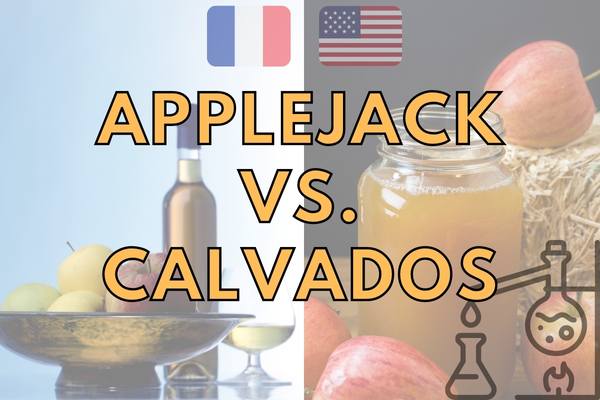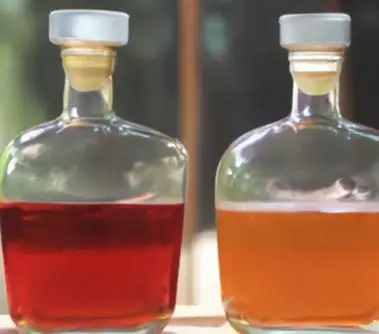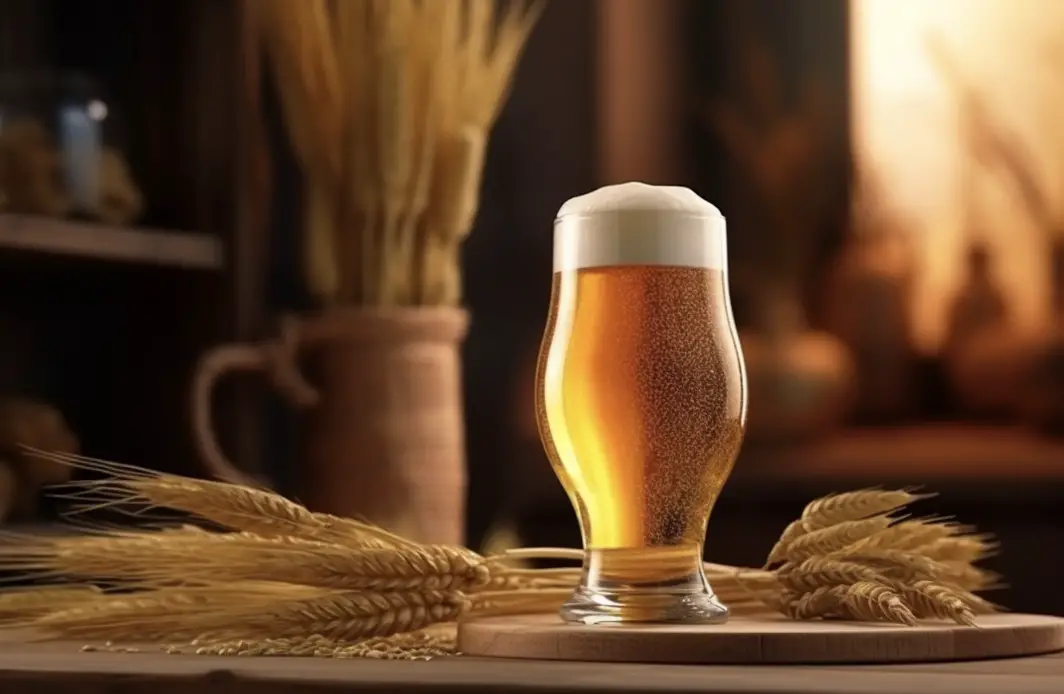Often mistakenly considered to be one and the same, these delectable libations share some similarities but also boast their own unique qualities and characteristics.
Whereas they are both two apple liquors essentially distilled from apple cider, whereas Apple Brandy is heat distilled, Applejack is distilled using the cold distillation method also known as “jacking”.
In this blog post, we will delve into the history, production processes, and flavor profiles of both Applejack and Apple Brandy, helping you better understand and appreciate these enchanting elixirs.
Definition of Applejack and Apple Brandy
Applejack and apple brandy are both distilled alcoholic beverages derived from apple cider. While the terms are often used interchangeably in the United States, they refer to slightly different products.
Applejack traditionally refers to a spirit made through freeze distillation, a process known as “jacking,” which concentrates the flavor and alcohol content by removing ice.
In contrast, apple brandy, like Calvados, is made using heat distillation, which results in a smoother, more refined spirit.
Both beverages have a unique and flavorful apple essence, and they hold a special place in American history and culture. [1][2]
A Short History of Applejack
Applejack has a long and storied history, dating back to colonial America. When the English settlers arrived, they brought with them their love for hard cider. However, as the harsh winters set in, they needed a way to preserve their cider and make it even more enjoyable. Enter the technique of freeze distillation, or “jacking.”
During the cold winter months, the settlers would leave barrels of cider outside to freeze. As the water in the cider turned to ice, the alcohol content would increase, and a potent concoction known as applejack was born. This spirit quickly became a popular drink in colonial America and even played a role in the Revolutionary War, with George Washington himself known to be a fan.
Fact 1: Applejack was a popular drink in colonial America and even played a role in the Revolutionary War.
A Short History of Apple Brandy
Apple brandy, on the other hand, has its roots in France, specifically the region of Normandy. Here, the abundance of apples led to the creation of the famous Calvados, a type of apple brandy that has become synonymous with the region.
The process of making apple brandy involves distilling fermented apple juice, similar to how one would make whiskey or other distilled spirits. This technique has been used for centuries, with the first recorded mention of Calvados dating back to the 16th century.
Fact 2: Apple brandy has its roots in France, where the famous Calvados was created.
Differences between Applejack and Apple Brandy
While both Applejack and Apple Brandy are fruit-based spirits derived from apples, there are a few key differences between the two. Applejack was traditionally produced using a freeze distillation technique, where cider was left to freeze, and the ice removed to increase alcohol content.

In modern times, it’s made by blending apple brandy with neutral spirits. On the other hand, Apple Brandy undergoes a heat distillation process and is typically aged for a more extended period in wooden barrels, imparting a more robust and complex flavor profile.
In essence, Applejack is a lighter, blended version of Apple Brandy, with each offering unique characteristics to their respective connoisseurs. [3][4]
3. History of Applejack and Apple Brandy in the United States
The history of Applejack and Apple Brandy in the United States dates back to colonial times, when the American Northeast had an abundance of apples.
These spirits were initially considered the same product, but the federal government and the Laird and Company distillery established official standards for blended apple brandy in the 1960s. Applejack and Apple Brandy then became legally distinct products.
Applejack was produced through a freeze distilling process called “jacking”, while Apple Brandy used heat distillation. Laird and Company plays a significant role in the history of Applejack, being the largest and oldest continuously operating distiller in the US. [5]
Distillation process of Applejack and Apple Brandy
The distillation process of Applejack and Apple Brandy varies, with each method contributing to their distinct flavor profiles.

Applejack traditionally undergoes freeze distillation, where hard apple cider is frozen and the ice is separated, leaving behind a concentrated apple spirit.
However, this method can be dangerous, and modern Applejack is often distilled in a heated environment similar to Apple Brandy.
Apple Brandy, on the other hand, is produced through heat distillation, where apple juice or cider is heated and the vapors are collected to form the brandy.
Both spirits require meticulous attention to temperature and technique in order to achieve their unique tastes. [7][8]
The Production Process of Applejack
As I mentioned earlier, applejack is traditionally made using freeze distillation. This process involves allowing the cider to freeze and then removing the ice, leaving behind a concentrated, higher-alcohol liquid. This can be done multiple times to increase the alcohol content even further.
Historically, this was done outdoors during the winter months, taking advantage of the natural freezing temperatures. Nowadays, however, modern production methods have made it possible to create applejack in a more controlled environment, ensuring a more consistent product.
Fact 3: Applejack is traditionally produced through freeze distillation, a process that concentrates the alcohol content by removing ice.
The Production Process of Apple Brandy
The production of apple brandy is quite different from that of applejack. It begins with the fermentation of apple juice, creating a hard cider. This cider is then distilled using heat, typically in copper pot stills. The resulting distillate is clear and has a higher alcohol content than the original cider.
Like other distilled spirits, apple brandy is often aged in oak barrels to develop its flavors and complexity. The aging process can vary in length, with some apple brandies aged for just a few years, while others are aged for decades.
Fact 4: Apple brandy is produced through heat distillation and is often aged in oak barrels to develop its flavors.
Applejack and Apple Brandy: Understanding the Distillation Process
Applejack and apple brandy are both distilled from apples, but their production processes differ, resulting in unique flavor profiles.
Applejack is traditionally made through freeze distillation, wherein fermented apple cider is left to freeze and the concentrated liquid is separated from the ice.
On the other hand, apple brandy undergoes heat distillation, a process similar to that of other spirits, where fermented apple juice is heated in a still, and the evaporated alcohol is collected and condensed.
Both applejack and apple brandy are aged in oak barrels, imparting distinct flavors and richness to the final products. [9][10]
Freeze distillation of Applejack
Freeze distillation, also known as jacking, is a traditional method used in producing Applejack. This process involves leaving apple cider outside to freeze and then carefully removing chunks of ice to concentrate the alcohol content.
As alcohol has a lower freezing point than water, the remaining liquid becomes enriched with fermented sugars and flavors. This method was popular during colonial America and gave Applejack its distinct, rich taste.
However, modern distillation techniques have largely replaced freeze distillation practices in commercial production, as it is considered less reliable and less efficient in yielding consistent results. [11][12]
Heat Distillation of apple brandy
Heat distillation of apple brandy is a process that involves fermenting apples to create an alcoholic base, which is then heated to remove impurities and increase the alcohol content. Apples are first crushed and juiced, and this juice is left to ferment for several weeks to reach the desired ABV (alcohol by volume).
The fermented mixture is then heated in a distillation apparatus, where the alcohol evaporates, separates from the liquid, and is collected as vapor. This vapor condenses back into a liquid, resulting in a concentrated apple brandy with a more pronounced flavor profile and a higher alcohol content than the original fermented apple juice. [13][14]
Flavor profiles of Applejack and Apple Brandy
Applejack and apple brandy both offer rich flavors derived from apples, but their profiles may vary slightly based on production methods and aging techniques. Both liquors generally exhibit fresh, fruity apple notes, often accompanied by hints of caramel, vanilla, or oak when aged in barrels.
Applejack, which may contain a blend with neutral grain spirits, may have a slightly lighter and sweeter character, while pure apple brandy can offer a more robust and complex taste.
Both beverages are versatile in cocktails and can also be enjoyed neat, showcasing their delightful apple-forward flavors. [15][16]
Flavor Profiles of Applejack
Due to its production process, applejack has a unique flavor profile that sets it apart from apple brandy. The freeze distillation process can result in a more concentrated, robust taste, with some describing it as “rustic” or “rough around the edges.”
The flavor of applejack can vary depending on the type of apples used and the specific production methods employed. However, some common notes include caramel, vanilla, and of course, apple. The taste is often described as warming and comforting, making it a perfect choice for those chilly winter nights.
Fact 5: Applejack has a unique, robust flavor profile due to its freeze distillation process.
Flavor Profiles of Apple Brandy
Apple brandy, on the other hand, tends to have a more refined and delicate flavor profile. The heat distillation and aging process can impart a smoother, more sophisticated taste. Common flavor notes in apple brandy include baked apples, cinnamon, and oak, with some variations depending on the specific brand or aging process.
High-quality apple brandies, like Calvados, can be incredibly complex and nuanced, offering a delightful sipping experience for those who appreciate the finer things in life.
Fact 6: Apple brandy has a more refined and delicate flavor profile due to its heat distillation and aging process.
Uses of Applejack and Apple Brandy
Applejack and apple brandy are versatile spirits that can be enjoyed in various ways. They are often used as a base for cocktails such as the Pink Lady or enjoyed as a sipping spirit on their own.
These spirits can also be used in cooking, particularly for deglazing pans, making a flavorful sauce for meats, or adding a fruity twist to desserts. Furthermore, they can be incorporated into warming winter drinks, such as mulled cider, and serve as a creative alternative in classic cocktail recipes that call for other types of brandy.
Overall, applejack and apple brandy offer delightful options for both beverage enthusiasts and culinary adventurers. [17]
Production and Aging of Applejack and Apple Brandy
The production of Applejack and Apple Brandy begins with carefully selected, tree-ripened apples, which are harvested during early September to mid-November, ensuring the best possible flavors.
The apples are then crushed, fermented, and distilled into a clear, unaged apple brandy. Applejack is created by blending this apple brandy with neutral grain spirits, while Apple Brandy remains unblended.
The aging process plays a crucial role in determining the final product; for example, Laird’s Old Apple Brandy is aged for a minimum of 7½ years in once-used bourbon barrels. This process enhances the flavors, creating a smooth, rich, and aromatic final product. [19][20]
Commercial production of Applejack and Apple Brandy
Commercial production of Applejack and Apple Brandy has a rich history dating back to colonial America. These distilled spirits are primarily derived from fermented apples, but their production processes differ. While Apple Brandy is often made entirely from apples and aged in oak barrels, Applejack is traditionally made through a blend of apples and other grains, resulting in a fruit-forward flavor profile. Reputable distilleries such as Laird’s, Tree Spirits, and Copper & Kings produce high-quality Applejack and Apple Brandy, offering connoisseurs various choices to suit their taste preferences. These spirits play a crucial role in classic cocktails like the Jack Rose, continuing to be popular among enthusiasts. [21]
How to Enjoy Applejack
Applejack can be enjoyed in a variety of ways. It’s delicious sipped neat, allowing you to fully appreciate its unique flavors.
If you’re in the mood for a cocktail, applejack works wonderfully in classics like the Jack Rose, which combines applejack, lemon juice, and grenadine, or the Applejack Old Fashioned, a twist on the classic made with applejack, sugar, and bitters.
Fact 7: Applejack is versatile and can be enjoyed neat or in cocktails like the Jack Rose or Applejack Old Fashioned.
How to Enjoy Apple Brandy
Much like applejack, apple brandy can be enjoyed neat or in a variety of cocktails. Sipping a well-aged apple brandy is a true pleasure, allowing you to savor its complex flavors and smooth finish.
When it comes to cocktails, apple brandy shines in classics like the Sidecar, made with apple brandy, Cointreau, and lemon juice, or the Corpse Reviver No. 1, a blend of apple brandy, sweet vermouth, and cognac.
Fact 8: Apple brandy can be sipped neat or used in cocktails like the Sidecar or Corpse Reviver No. 1.
Popular Applejack and Apple Brandy cocktails
Applejack and Apple Brandy are often featured in delightful and classic cocktails. One of the most popular and well-known is the Jack Rose, which combines Applejack with lime juice and grenadine.

Other favorites include the Apple Brandy Old Fashioned, in which the classic Old Fashioned cocktail is reinvented with a splash of Apple Brandy, and the Orchard Keeper, which mixes Apple Brandy with pear liqueur, lemon juice, and honey syrup.
Additionally, with the growing popularity of creative mixology, more variations of Applejack and Apple Brandy cocktails are being crafted by talented bartenders worldwide, delighting customers with unique flavors and presentations. [23][24]
Health benefits and risks of consuming Applejack and Apple Brandy
There are both health benefits and risks associated with consuming Applejack and Apple Brandy. In moderate amounts, these spirits may aid in digestion and promote relaxation.
They are also rich in antioxidants, which can help protect the body against free radicals and reduce the risk of heart disease.
However, excessive consumption of Applejack and Apple Brandy can lead to a variety of health risks, such as alcohol-related liver damage, addiction, and increased chances of developing certain cancers.
It is essential to enjoy these beverages responsibly and in moderation to strike a balance between the potential benefits and risks to your health. [25]
Availability and Price
Both applejack and apple brandy can be found at most well-stocked liquor stores, with a range of options available at various price points. Applejack is often more affordable than apple brandy, with many options available for under $30 a bottle.
Apple brandy, particularly high-quality options like Calvados, can be more expensive, with prices ranging from around $30 for entry-level bottles to several hundred dollars for rare, aged expressions.
Fact 9: Applejack is often more affordable than apple brandy, with a range of options available at various price points.
Conclusion
So, there you have it – the difference between applejack and apple brandy lies in their production processes, resulting flavors, and characteristics. Applejack, with its freeze distillation process, offers a robust, rustic flavor profile that’s perfect for sipping by the fire or mixing into cocktails. Apple brandy, crafted through heat distillation and often aged in oak barrels, provides a more refined and sophisticated tasting experience.
Whichever spirit you choose, you can’t go wrong with these delicious, apple-based libations. Here’s to enjoying them both and appreciating the unique qualities they bring to the table. Cheers!
Applejack vs Apple Brandy: The Verdict
- Applejack has a rich history in colonial America, while apple brandy has its roots in France.
- Applejack is traditionally produced through freeze distillation, while apple brandy is made using heat distillation.
- The flavor profile of applejack is rustic and robust, with notes of caramel, vanilla, and apple.
- Apple brandy has a refined, delicate flavor profile, with notes of baked apples, cinnamon, and oak.
- Both spirits can be enjoyed neat or in a variety of cocktails.
- Applejack works well in cocktails like the Jack Rose and Applejack Old Fashioned.
- Apple brandy shines in classics like the Sidecar and Corpse Reviver No. 1.
- Applejack tends to be more affordable than apple brandy.
- Both applejack and apple brandy can be found at most well-stocked liquor stores.
- The choice between applejack and apple brandy ultimately comes down to personal preference and the desired tasting experience.
FAQs
Is applejack a whiskey or brandy?
Applejack is technically a brandy, as it is made by distilling fermented apple cider.
Is apple Jack a bourbon?
No, applejack is not a bourbon. It is a type of brandy made from distilled apple cider. Bourbon is a type of whiskey made from at least 51% corn and aged in new, charred oak barrels.
What kind of liquor is apple Jack?
Apple Jack is a type of brandy made from distilled hard cider.
What is the difference between apple brandy and applejack?
Apple brandy is made from fermented and distilled apples, while applejack is made from hard cider that is freeze-distilled, or “jacked,” to increase its alcohol content. Apple brandy is typically aged in oak barrels, while applejack is not always aged.
Is apple Jack a whiskey?
Yes, apple jack is a type of whiskey that is made from apples.
Is applejack brandy or whiskey?
Applejack is a type of brandy made from apples, not whiskey.




